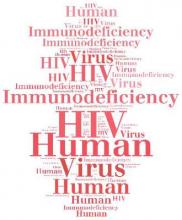The Joint United Nations Programme on HIV/AIDS (UNAIDS) 90-90-90 targets to end the AIDS epidemic by 2020 would avoid an additional 873,000 transmissions in South Africa and save more than one million lives over 5 years, compared with the current strategy, researchers reported in the Annals of Internal Medicine.
The 90-90-90 goals aim to diagnose 90% of HIV-infected persons worldwide, ensure 90% of HIV-infected individuals are on antiretroviral therapy, and that 90% of these people achieve virologic suppression by 2020. If successful, this would achieve overall virologic suppression of 73%, compared with the current estimates of 29%.
Using a model of HIV detection, disease, and treatment, researchers compared the “current pace” strategy with the UNAIDS diagnosis and treatment targets, examining both clinical and economic outcomes.
Their analysis showed that the UNAIDS strategy would avert 1.174 million deaths, 726,000 maternal orphans, and save 3 million life-years over 5 years, compared with the current strategy. Over 10 years, it would avert 2.05 million HIV transmissions, 2.478 million deaths, and 1.689 million maternal orphans while saving 13.34 million life-years.
However these gains would come at an additional cost of $7.965 billion over 5 years and $15.979 billion over 10 years (Ann Intern Med. 2016 May 31. doi: 10.7326/M16-0799).
When researchers compared the cost-effectiveness of the UNAIDS targets with current pace strategy – looking at the change in costs divided by the change in years of life saved – the UNAIDS strategy showed an incremental cost-effectiveness ratio of $2,720 per year of life saved over five years, and $1,260 over ten years.
“These incremental cost-effectiveness ratios represent 42% and 19%, respectively, of the South African per capita gross domestic product ($6,500), suggesting that the UNAIDS target strategy is very cost-effective by international standards in this setting,” wrote Dr. Rochelle P. Walensky of the Medical Practice Evaluation Center at Massachusetts General Hospital, Boston, and her coauthors.
The authors found that to achieve 90% rates of diagnosis and linkage with antiretroviral therapy in South Africa, HIV screening would be required around every 2 years, and the virologic suppression targets would require 5-year retention rates approaching 90%.
“These performance levels are as good as those reported in the most rigorous U.S.-based and international clinical trials, which generally bias enrollment to the most adherent patients,” the authors wrote. “We emphasize that these performance targets are ambitious, but plausible: Emerging evidence suggests that best practices can be implemented and sustained, both in resource-rich and resource-constrained settings.”
The study was funded by the National Institutes of Health and by a Steve and Deborah Gorlin Massachusetts General Hospital Research Scholars Award. One author reported membership of the Scientific and Technical Advisory Committee of the U.S. Department of Health and Human Services Panel on Antiretroviral Guidelines for Adults and Adolescents, one declared personal fees from OptumInsight, one author declared personal fees from Results for Development Institute, others declared grants from the National Institutes of Health, and one also reported membership on the U.S. Department of Health and Human Services Panel on Treatment of HIV-Infected Pregnant Women and Prevention of Perinatal Transmission. No other conflicts of interest were declared.


